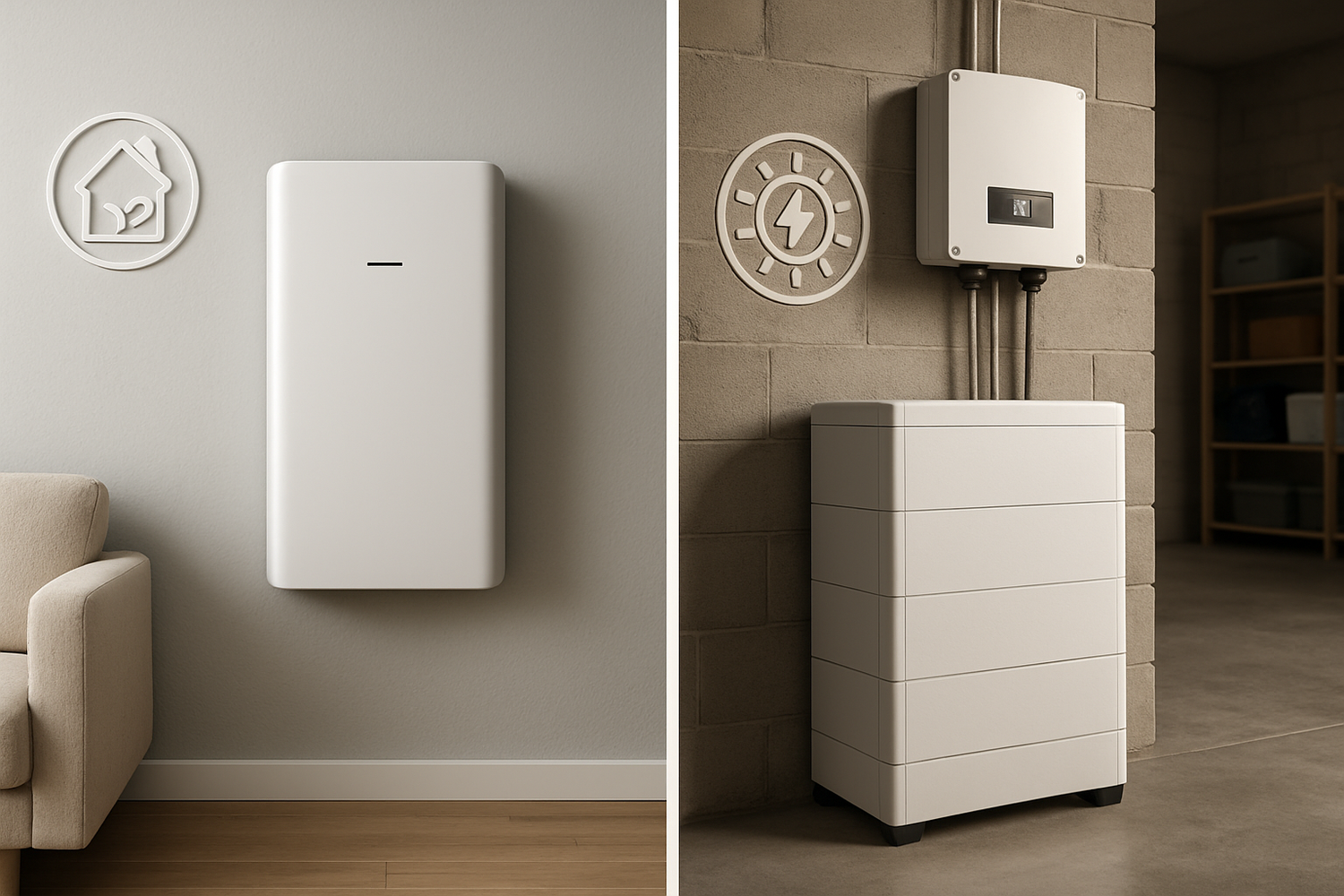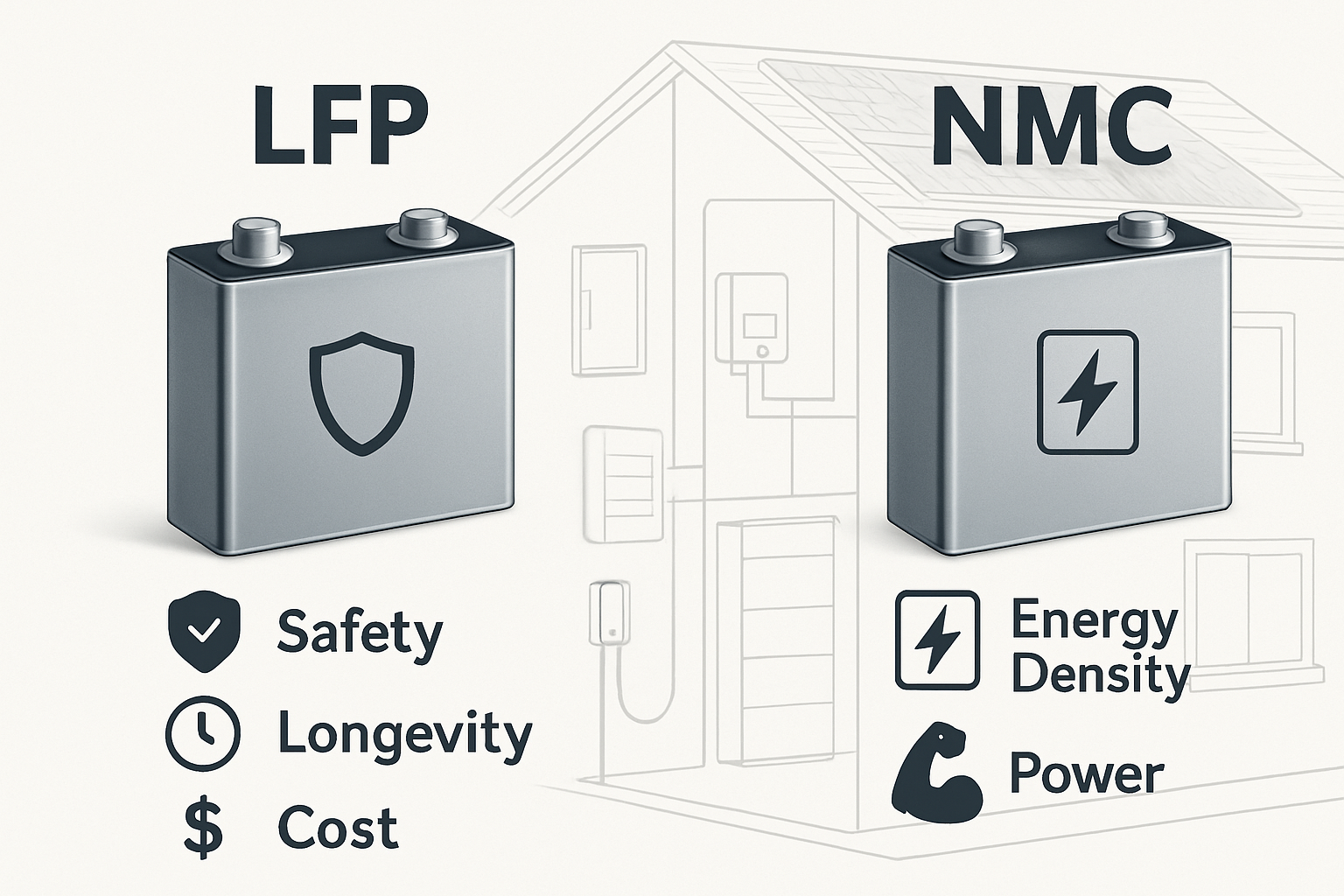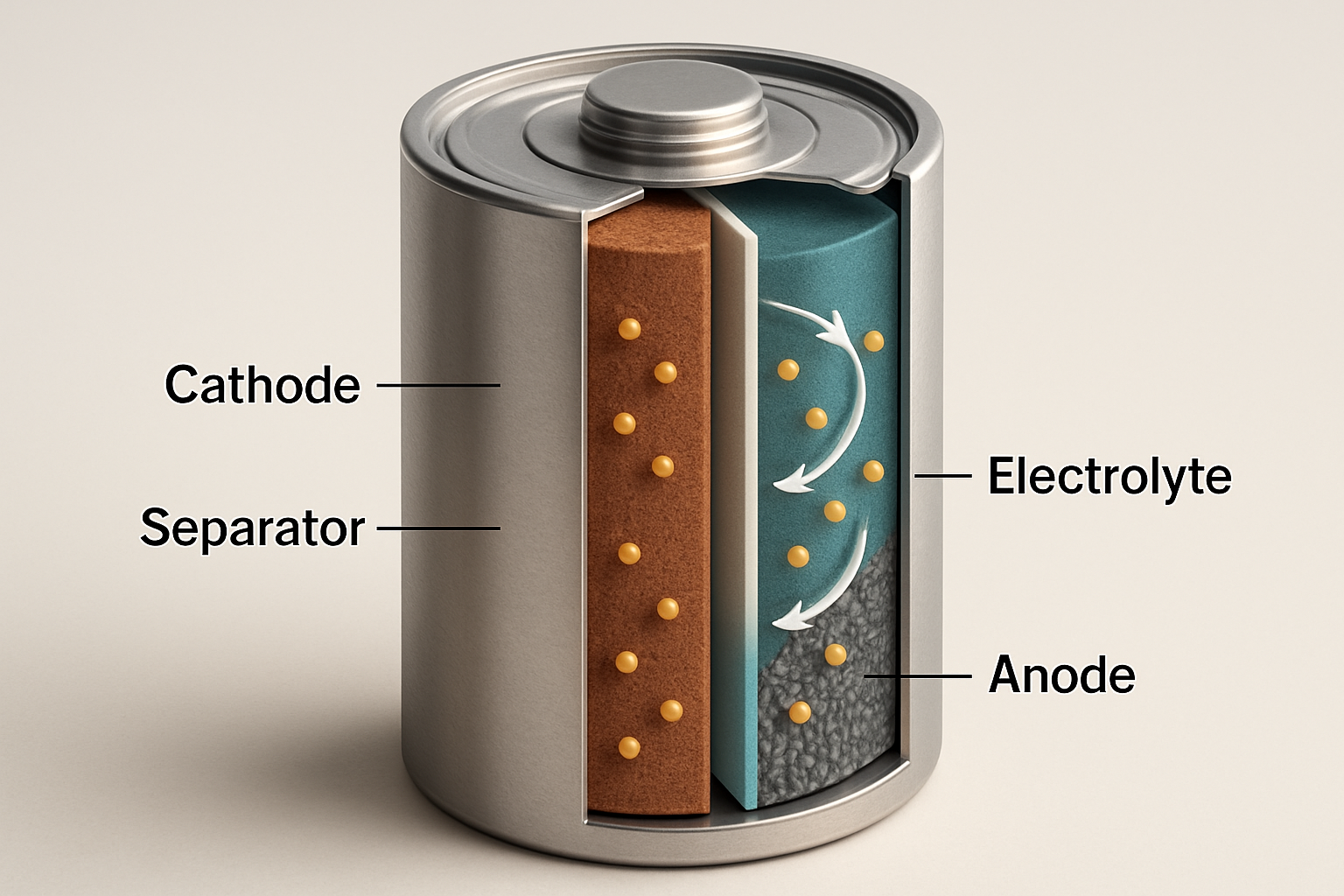Selecting the right battery for a solar energy system is a foundational decision. Among the various lithium-ion technologies, two chemistries stand out: Lithium Iron Phosphate (LiFePO4) and Nickel Manganese Cobalt (NMC). While both power modern energy solutions, they have distinct characteristics. Understanding these differences is key to choosing a battery that aligns with your energy goals, whether for a home battery storage system or an off-grid solar solution.
The Core Differences: Safety and Lifespan
For any long-term energy asset, especially one inside your home, safety and durability are paramount. LiFePO4 and NMC batteries approach these critical aspects from different chemical foundations.
Safety First: The Stability of LiFePO4
LiFePO4 batteries are recognized for their exceptional safety profile. Their strength comes from a robust crystalline structure built upon a phosphate-based cathode. This makes the battery chemically and thermally stable. LiFePO4 has a much higher thermal runaway threshold, meaning it is significantly less likely to overheat or catch fire if overcharged or short-circuited. This inherent stability provides peace of mind for residential installations. NMC batteries, while safe under normal operating conditions with a proper Battery Management System (BMS), have a higher-energy chemistry that is more susceptible to thermal runaway if damaged or mismanaged.
Longevity and Durability: Cycle Life
A battery's cycle life determines how many times it can be fully charged and discharged before its capacity degrades significantly. This metric is crucial for the return on investment in a solar power storage system. LiFePO4 batteries excel here, often delivering between 6,000 and 10,000 cycles. In contrast, NMC batteries typically offer a cycle life of up to 5,000 cycles. According to an innovation outlook from IRENA, the extended lifespan of LiFePO4 makes it a more durable and cost-effective choice over the long term for stationary storage.
Performance and Efficiency Under the Microscope
Beyond safety and lifespan, the performance characteristics of a battery dictate how it behaves in a real-world solar setup. Energy density, efficiency, and power delivery are all critical factors.
Energy Density: NMC's Key Advantage
Energy density refers to the amount of energy a battery can store relative to its physical size and weight. This is where NMC technology holds an edge. NMC batteries can store more energy in a smaller space, making them a preferred option for applications with strict size or weight constraints. The International Energy Agency (IEA) notes that this high energy density makes NMC ideal for wall-mounted residential batteries in cities where space is limited. A LiFePO4 battery, such as a 12v 100ah lifepo4 lithium battery, will be bulkier and heavier than an NMC battery of the same capacity.
Efficiency and Power Delivery
Round-trip efficiency measures how much energy is returned from the battery compared to the amount put in. NMC batteries have a slight advantage, with efficiencies often in the 94-99% range, while LiFePO4 batteries are typically just under 90%. While a few percentage points may seem small, it can add up over the life of the system. However, LiFePO4 often compensates with a superior ability to deliver power, known as the C-rate. Many LiFePO4 batteries can handle higher charge and discharge rates without significant stress, making them very capable in applications with high power surges. For a deeper look at these metrics, you can review this ultimate reference for solar storage performance.
Cost and Market Trends
The financial aspect is often a deciding factor. Here, it is important to look beyond the initial price tag and consider the total cost of ownership and broader market dynamics.
Upfront Cost vs. Total Cost of Ownership
LiFePO4 batteries generally have a lower upfront cost. This is largely because they do not use cobalt, a rare and expensive material central to NMC chemistry. When you combine the lower initial price with a cycle life that is nearly double that of NMC, the Levelized Cost of Storage (LCOS) for LiFePO4 is significantly lower. This means that over the lifetime of your solar energy storage system, each unit of energy stored and delivered by a LiFePO4 battery costs less.
Market Adoption and Supply Chain
The market for stationary energy storage has increasingly favored LiFePO4. A 2024 report on Renewable Power Generation Costs from IRENA highlights a dramatic shift: LFP's share of the utility-scale battery market grew from 48% in 2021 to an estimated 85% in 2024, while NMC's share declined from 36% to 9%. This trend reflects the industry's prioritization of safety, longevity, and cost-effectiveness for stationary applications. Furthermore, the LFP supply chain is more stable, as it avoids the geopolitical and ethical mining concerns associated with cobalt.
A Comparative Summary: LiFePO4 vs. NMC
This table provides a clear, at-a-glance comparison of the two lithium battery chemistries.
| Feature | LiFePO4 (LFP) | NMC |
|---|---|---|
| Safety | Excellent (Very stable, high thermal runaway threshold) | Good (Requires advanced thermal management) |
| Cycle Life | 6,000 - 10,000 cycles | Up to 5,000 cycles |
| Energy Density | Lower | Higher |
| Round-Trip Efficiency | ~90% | 94-99% |
| Upfront Cost | Lower | Higher |
| Key Application | Residential & off-grid solar, stationary storage | Electric vehicles, space-constrained applications |
A Final Perspective
The decision between a LiFePO4 battery and an NMC battery depends entirely on your specific needs. For the vast majority of residential and commercial solar storage projects, where safety, a long service life, and value are the primary concerns, LiFePO4 is the clear frontrunner. Its robust nature and favorable economics make it an ideal foundation for achieving energy independence. NMC retains its relevance in specialized situations where maximizing energy storage in a minimal amount of space is the most important factor. By carefully weighing these attributes, you can select the right technology to power your energy future.
Frequently Asked Questions
Is NMC unsafe for home use?
NMC batteries are not inherently unsafe, but their chemistry requires more complex and precise thermal management and safety systems to operate reliably. The chemical structure of a LiFePO4 battery is intrinsically more stable and forgiving, making it a more conservative and often preferred choice for a home energy storage system.
Why is a LiFePO4 battery heavier than an NMC battery for the same capacity?
This difference is a direct result of energy density. Because NMC chemistry can store more energy per unit of volume, it requires less physical material to achieve a certain capacity, like 100Ah. A lithium iron phosphate battery needs more material to store that same amount of energy, leading to a larger and heavier final product.
Does temperature affect these batteries differently?
Yes, temperature sensitivity is a key differentiator. NMC chemistry is more susceptible to degradation at higher temperatures, which can shorten its operational life. LiFePO4 batteries are more resilient to thermal stress and can operate efficiently across a wider range of temperatures, making them more durable in various climates.
Can I use an NMC battery for an off-grid solar system?
While an NMC battery could technically be used, a deep cycle lithium battery based on LiFePO4 chemistry is almost always the recommended choice for off-grid solar solutions. The demands of an off-grid system—reliability, durability, and safety—are perfectly aligned with the strengths of LiFePO4 technology, ensuring a dependable power supply for years.





Leave a comment
All comments are moderated before being published.
This site is protected by hCaptcha and the hCaptcha Privacy Policy and Terms of Service apply.